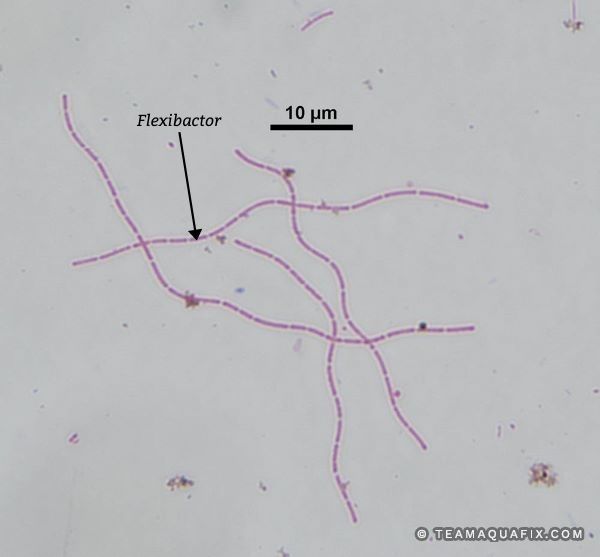
Flexibactor is an indicator of low D.O. and septic conditions, but has no effect on the system.
If Flexibactor is observed in your plant, we recommend increasing aeration to raise the oxidation/reduction potential in your wastewater plant. If this is not possible, Aquafix recommends the use of OxyFresh which helps combat low dissolved oxygen conditions. To determine the underlying cause of low D.O. contact a technical representative.
Because wastewater issues and the cause behind filaments can be complex, we recommend our Filament ID and Microanalysis. This not only confirms organism ID, but looks at biological indicators, plant design, and incoming substrates to decode your unique process.
Flexibactor is a small (<200 µm) and narrow (0.5-0.8 µm) motile filament that moves in a flexing motion. This filament can be identified under 400x by its movements. The filament moves in search of higher oxygen environments. Flexibactor stains Gram and Neisser negative. While Flexibactor is rare to see in aerobic wastewater treatment systems, it is an indicator organism of low dissolved oxygen conditions. While this filament does not need to be treated, the low DO conditions may be causing other issues that could need to be addressed. Occasionally Flexibactor spp. can contain sulfur granules.
Flexibactor. (2012, March 2). Activated sludge information systems. Retrieved September 3,2020, from
https://www.asissludge.com/

39041 RGE RD 283,
Red Deer County, AB T4E 0M2
Phone: 1-888-466-0031 |
Fax: 1-888-507-9716
To place an order, please fill out the required fields below and proceed to checkout. Ensure all information is accurate, and feel free to contact our support team if you have any questions or need assistance. Thank you for choosing us!